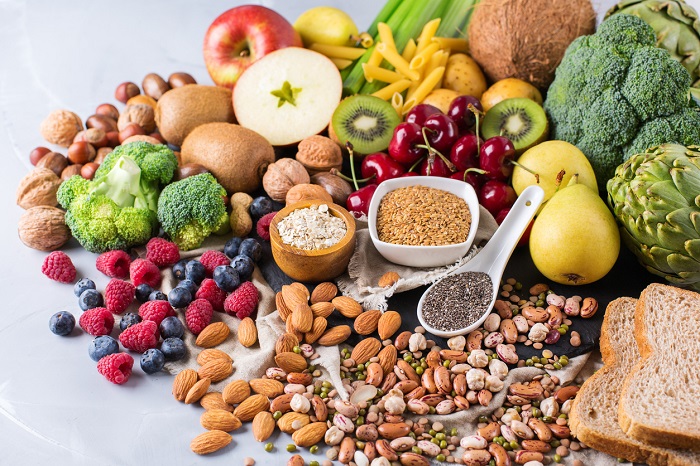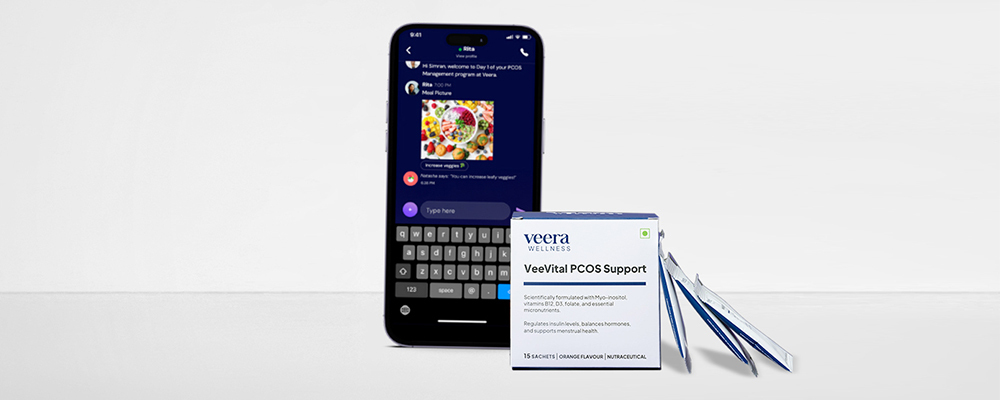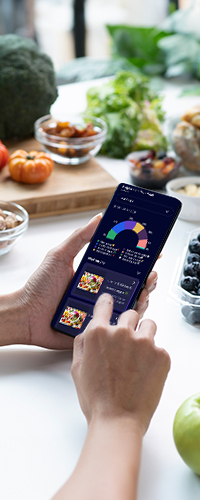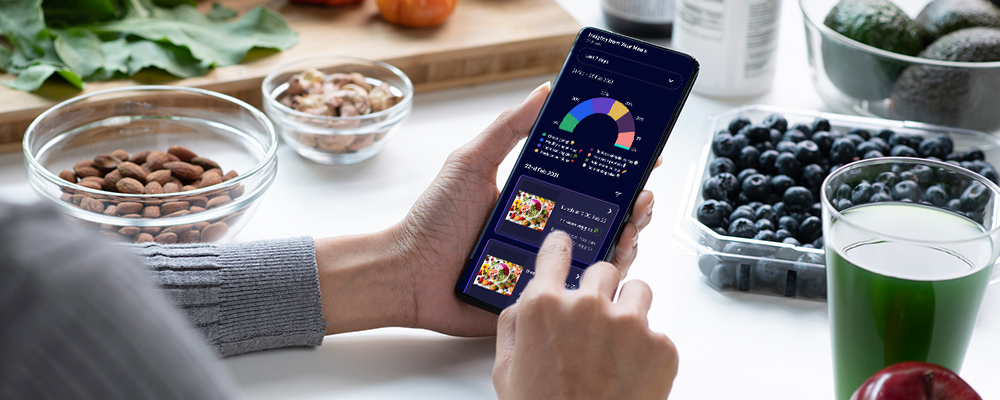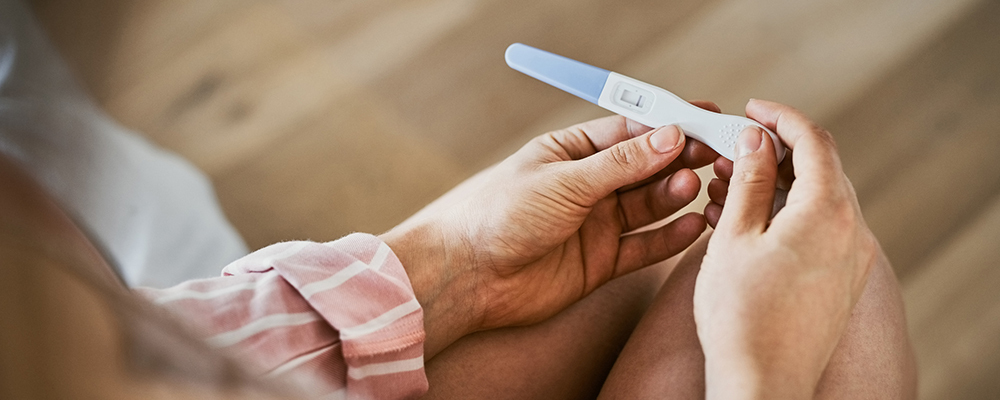With the increasing health problems and diet restrictions, people have become more experimental with their favorite fast foods. When it comes to pizza, preferences vary widely. Some favor thin or thick crusts, loads of toppings or a minimalist approach, tomato or pesto sauce, and dipping condiments like mayo or ketchup. The beauty of pizza lies in its adaptability and family appeal.
We are embracing gluten-free and dairy-free pizzas, exploring innovative crusts made from root vegetables, cauliflower, potatoes, and winter squashes. Traditionalists might initially balk at these crust options, but the true delight of their flavors remains undiscovered until you give them a try. Moreover, these alternative crusts allow you to elevate your pizza with added nutrition.
What is PCOS?
Polycystic ovary syndrome (PCOS) is a prevalent hormonal condition affecting women in their reproductive years, typically commencing in adolescence, with symptoms that may vary over time. PCOS manifests with hormonal imbalances, irregular menstrual cycles, elevated androgen levels, and the presence of cysts in the ovaries. The irregular menstrual cycles, often accompanied by a lack of ovulation, can pose challenges for conception, making PCOS a primary contributor to infertility.
While PCOS is a chronic condition without a cure, certain symptoms can be ameliorated through lifestyle modifications, medications, and fertility treatments. The precise cause of PCOS remains unknown, but individuals with a family history or those with type 2 diabetes face an increased risk of developing this condition.
The importance of a healthy diet for women with PCOS
The primary factors associated with PCOS include:
- Insulin resistance
- Alterations in metabolic and hormonal functions
- Elevated body fat levels
- Challenges in producing gonadotrophin-releasing hormones essential for reproductive well-being
These factors are interconnected, forming a cycle that diet may influence to mitigate the impact of PCOS and reduce the risk of complications such as diabetes and cancer.
Dietary choices can play a crucial role in addressing PCOS by managing:
- Body weight
- Insulin production and resistance
- Blood sugar levels
- Oxidative stress, which increases the risk of inflammation and cancer
More than half of individuals with PCOS develop diabetes or prediabetes before the age of 40, and diabetes is closely linked to insulin processing in the body. Dietary measures to prevent diabetes can significantly contribute to effectively managing PCOS and promoting overall well-being.
Why traditional pizza can be unhealthy
Processed pizzas, whether frozen or fast-food varieties, often contain higher levels of unhealthy ingredients compared to homemade ones. Ingredients such as preservatives, colorings, and unhealthy fats are commonly found in frozen and fast-food pizzas. Regardless of the preparation method, all pizzas typically use refined wheat flour, which is low in fiber and less filling than whole-grain alternatives. Consumption of refined grain products, including ready-made meals like pizza, has been associated with weight gain. A study involving 1,352 individuals revealed that those consuming over 70 grams of ready-made products like pizza daily were more likely to have increased belly fat compared to those consuming under 70 grams per day.
Most pizzas tend to be high in calories and sodium, primarily due to toppings like cheese, salty meats, and other calorie-dense ingredients. Some pizzas even contain added sugar in the crust, toppings, and sauces. Regular consumption of refined foods with added sugar has been linked to an elevated risk of chronic conditions such as obesity and heart disease. Opting for stuffed crust or deep-dish pizzas can further increase each slice’s carb and overall calorie content. While an occasional indulgence in fast food or frozen pizza may not significantly impact your weight, regular consumption can contribute to weight gain and raise the risk of chronic health conditions.
Creative ways to make your favorite pizza healthy

1) Opt for a Whole-Grain Crust
Prepare your own using this quick and simple recipe to add extra fiber and protein to each satisfying slice.
2) Choose Lighter Cheeses
Enhance flavor while reducing calories by combining part-skim mozzarella, sharp provolone, and naturally lower-fat Parmesan.
3) Pile On the Veggies
Turn pizza night into a fridge-clearing delight. There are no restrictions—whatever you have, toss it on.
4) Watch Your Portions
Pizza is often consumed mindlessly, so be mindful of serving sizes (do you truly need that third or fourth slice?).
5) Select Healthier Toppings
Instead of excessive cheese, opt for robust, nutritious pizza toppings like roasted squash and meaty mushrooms.
6) Opt for Leaner Meats
Meat enthusiasts need not miss out. Replace fatty meats like pepperoni and pork sausage with thinly sliced (leaner) salami, turkey bacon, and chicken sausage.
7) Pair It with Salad
Rather than simply cutting back on pizza, accompany it with a generous salad. This makes adhering to tip No. 4 (mentioned above) much easier.
8) Use Homemade Sauce
Commercial pizza sauces are often high in sodium and preservatives. Creating your own will instantly elevate the quality of any pizza recipe. Consider alternatives like pesto or a blend of good olive oil and fresh garlic.
9) Add a Kick of Spice
Opt for spice over grease. Fresh chiles and red pepper flakes complement more delicate flavors such as fresh tomatoes and herbs.
Healthy pizza recipe
Gluten-free
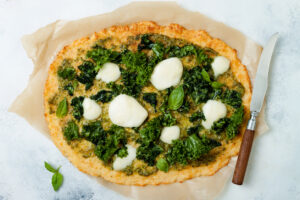
Ingredients
- 150g Sweet Potato, peeled and diced (about 1 heaping cup)
- 1 tbsp Ground Flax + 2 ½ tbsp Filtered Water
- ¾ cup Brown Rice Flour
- 2 tbsp Tapioca Flour
- 1 tsp Baking Powder
- ½ tsp Pink Salt
- Optional: Seasonings of Choice
Instructions:
- Preheat the oven to 190 C.
- Peel and dice the sweet potato into ½” pieces; use a food scale for accuracy.
- Steam the sweet potatoes in a basket until fork-tender (10-15 minutes).
- While steaming, prepare the Flax “Egg” in a small bowl; set aside.
- In a medium bowl, whisk together the remaining dry ingredients.
- Transfer the steamed sweet potatoes to a large bowl and mash.
- Mix the Flax Egg well; gradually add and combine half of the dry ingredients.
- Knead the dough into a ball using your hands; place it between two parchment paper sheets.
- Roll out the dough into a ⅓-½” thick circle, then transfer it to a baking sheet.
- Bake for 10 minutes, then cover with a second parchment paper sheet.
- Flip the crust, peel off the top parchment paper, and top as desired.
- Return to the oven for 10-12 minutes; optionally broil for 1-2 minutes for crispiness.
Dairy-free

Ingredients
- 3 cups flour, divided
- 1 tablespoon sugar (make sure it’s vegan if you are)
- 2 ¼ teaspoon active dry yeast (or 1 package)
- 1 teaspoon garlic powder
- 1 teaspoon Italian seasoning
- ½ teaspoon salt
- 1 ½ cups warm water
- 2 tbsp olive oil
- 1 cup marinara sauce (more or less depending on preference)
- 1 cup dairy-free cheese
- ¼ cup dairy-free parmesan
- Optional: Any additional toppings desired, cooked
Instructions
- In a large bowl, add 1 ¾ cups flour with the sugar, yeast, garlic powder, Italian seasoning, and salt. whisk together
- Add the warm water and oil. Stir with a silicone spatula until a thick pancake-like batter forms.
- Add 1 more cup of flour to the mixture and, using a spatula, stir enough so the mixture holds together by itself.
- Lightly flour a flat surface and with a little flour on your hand, remove the dough mixture from your bowl onto the surface.
- Knead in another ¼ cup of flour (you may need to add up to ½ cup) stopping once the dough is lump-free. Do not overwork your dough.
- Place dough in a bowl and cover with a tea towel (or other kitchen towel that is large enough to cover bowl completely)
- Let the dough in the bowl sit, covered, for 45-60 minutes. (We like waiting until 60 minutes, but you can use it after 45 if needed)
- Heat the oven to 500 degrees with a pizza stone inside.
- Lightly flour a large piece of parchment paper
- Roll the dough out onto a floured surface. and spread out with your hands into approximately a 17-inch diameter.
- Poke the pizza with a fork gently all over except for the edge which will become your crust.
- Top with your pizza sauce, dairy-free shredded and Parmesan cheese and any optional toppings you plan to use.
- Place dairy-free pizza crust in the oven (still on parchment paper) for 7-8.
- Remove from oven. Let cool slightly. Cut into slices and serve immediately.
Get PCOS diet tips from our nutritionists
When seeking the appropriate PCOS diet, it’s crucial to begin with small steps. The abundance of information on PCOS diets online can be overwhelming, so initiate your journey with a single goal and consult a nutritionist. Once you feel at ease accomplishing this initial goal, proceed to the next step.
Learn more about Veera
At Veera Health, we prioritize your diet as a crucial element in addressing your PCOS. Our care managers will evaluate your nutritional requirements and guide you on whether a healthy pizza diet or another approach is beneficial for you.

